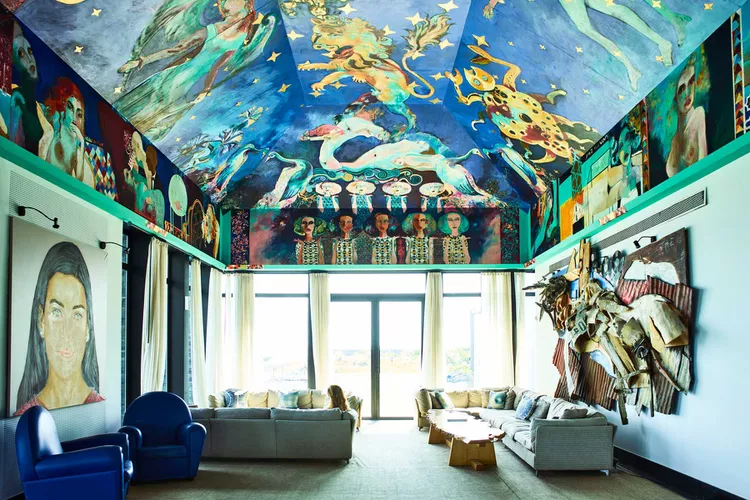One of the nicest beach scenes in South America may be seen in this nation. The rich, ranch-filled interior and rolling winelands, however, have received little attention up to this point.
In less than 30 minutes, I made it across town in rush hour and downed a plate of barbecue at the Mercado del Puerto. By the time I'd breezed through automated border control at Montevideo's Carrasco Airport, gotten an earnest bro handshake from the rental-car guy, and crossed town, I remembered why I've always loved visiting Uruguay. There isn't a country in the entire world that is more relaxed, modest, consistently agreeable, or that has finer meat.
I had not been back to Uruguay in more than ten years when I went there in the beginning of December 2019. I had used the dinner as a litmus test to defend my carnivorous diet. Did the menus at this collection of parillas (restaurants in Montevideo that specialise in steak, sausage, and organ meats, grilled over firewood and charcoal) changed? Had the location lost its solid, working-class vibe and become a prissy, boutique atmosphere instead? The parilla was a crucial part of every Uruguayan memory I have from my youth.
I received my response while sitting at the counter and seeing the grill-tenders as they provided samples of grilled provolone while flashing arm and occasionally neck tattoos. Everything was just as I remembered it, from the reliable coffee to the brilliant dulce de leche pancake, with the exception of the previously grass-fed cows that were now somewhat fattened with grain.
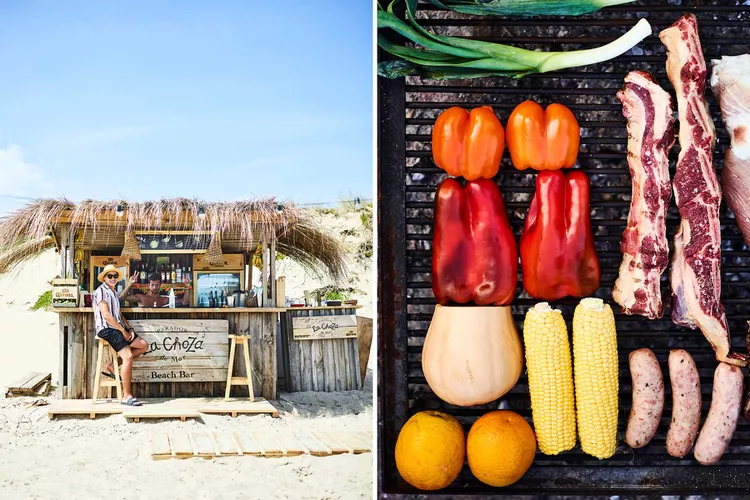
My ancestors arrived in Montevideo, Uruguay's capital, in the beachfront Carrasco area after escaping Serbia during World War Two. Eventually, their children scattered to Argentina and the United States (our former home is now a branch of Banco Chase). But during my formative years and into my twenties, family vacations involved flying to Punta del Este in Uruguay after meeting up with family in Buenos Aires. There was no need for a hotel because El Grillito, my aunt's white-brick home with a blue roof, served as a base for beach excursions and evening strolls along Gorlero Boulevard, Punta del Este's major thoroughfare, in search of churros and ice cream.
Our family visits dwindled as my siblings and I aged. Punta del Este succumbed to overdevelopment and turned into "a mini-Miami," in my aunt's words. Farther along the coast of the province of Maldonado, as well as in the neighbouring, more tranquil province of Rocha, my cousins started renting beach cottages. Years passed, actually a few decades. Prior to the United States, Uruguay's government legalised marijuana and homosexual marriage in 2013, making headlines around the world. Without much fanfare, the 3.5 million-person nation rose to number 14 on the Happiness Planet Index, and all of a sudden, this breezy, laid-back stretch of beaches that I'd always thought of as a no-frills hideaway for wealthy Argentines had reinvented itself as a glitzy, international getaway that people were now referring to as "the Uruguayan Riviera" and "the St.-Tropez of South America."
I couldn't resist the notion when my cousin Michele, who still resides in Buenos Aires, proposed we take a reunion trip of the area rather than looking for our ancestors' homes. So, a month later, after a sombre drive past El Grillito (now owned by someone else), we found ourselves crossing the wavy Leonel Viera Bridge, which divides Punta del Este from the sleepier towns to the east, and tearing down coastal Route 10 past the remarkably undeveloped sand dunes and expansive beaches I remembered from my youth.
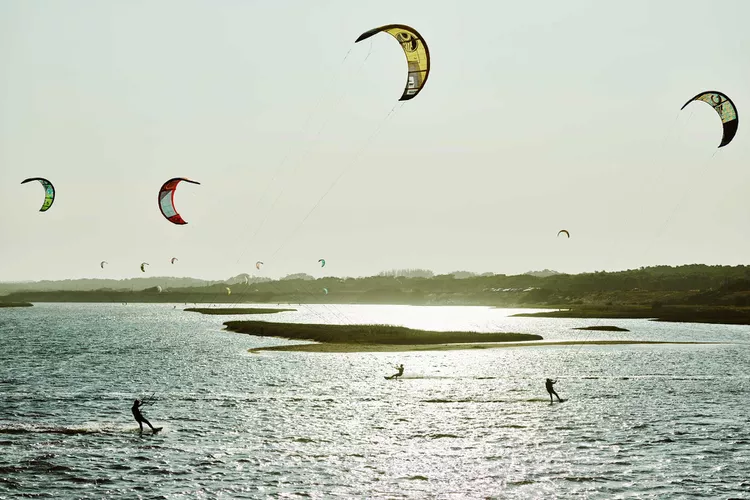
José Ignacio, a modest fishing village reinvented as the heart of Uruguay's beach scene, is possibly the coolest town of them all. My cousin gave me a very exclusive tour of the facility. The lighthouse on the rocky point separating the town, the houses she had rented throughout the years, "some with partners, some without girlfriends," and a pebbly beach "where you may come in the morning and buy fish from the fisherman" were all pointed out by the woman. Well, she said, some smaller homes have been replaced by larger ones since music singers, soccer players, and supermodels arrived. The shabby are now outnumbered by the fashionable, and the town is busier.
Yet, the area continued to appear to me to be beautifully untouched. There are at least two angles on the Atlantic in almost every part of the town. The playa brava, also known as the "rough beach," is on one side and the playa mansa, also known as the "calm beach," is on the other. Gates, walls, ostentatious lettering, or garish building are not present in either view. "Here, you may take a stroll to the restaurant, the beach, and the plaza where you can enjoy a cup of coffee. No need for a car "said Michele.
My relative scoffed at similarities to places like St. Tropez and the Hamptons. St. Tropez is congested and has very little sand, she said. Although the Hamptons are stunning, socially... She blinked. She remarked, "Uruguay, you have beach spanning the full length of the coast." She estimated that "the Uruguayan Riviera" contains at most 15 hotels with a combined capacity of 1,000 people. The scenario will never get too intense because there is so much open space and few people around.
Without a doubt, La Huella is the area's most popular dining establishment. It's arguably the most painstakingly crafted imitation of effortlessness you'll ever see. Built to look and feel like a boathouse, it has a thatched roof, sand-dusted wooden deck flooring, and a staff of perfect-looking, equally tanned twentysomethings. In the busy months of January and February, it's also the most difficult table to score well on.
When the polo-shirted maître d' seated us on the outdoor deck next to the entrance, my cousin was shocked. It's the best, she said. "They place you in the back when they don't want others to notice you." We skipped the sushi and had mollejas, grilled sweetbreads, and white corvina, one of the nicest, purest fish meals I've ever had, which was prepared with basically nothing except salt.
With a continual stream of Argentine friends, my cousin waltzed through a sequence of pleasantries — kiss kiss, both cheeks, "Ayyy, qué diving!" — and I was reminded of the elaborate social customs of my younger years in this still rather small world. The children, the beach, the sh-sh-sh-heavy dialect of Uruguay and Argentina, and the sea all felt quite familiar. The addition of a variety of voices speaking Dutch, German, French, and Portuguese, as well as American and British English, was novel, at least to me.
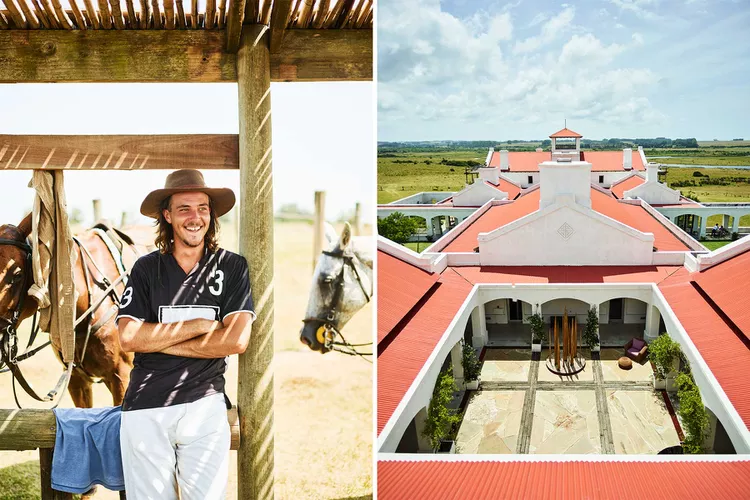
Estancia Vik appeared unusually calm at first. The ranch, which is seven miles inland from José Ignacio, is one of three Uruguayan properties that billionaire businessman and entrepreneur Alex Vik and his wife, Carrie, have established (the other two, Playa Vik and Bahia Vik, are on the beach). I had anticipated something along the lines of a glamorous dude-ranch rendition of La Huella since the Viks are sometimes credited with creating the region's image for international, cosmopolitan élan. Yet, there was only one car in the driveway when we got there—ours. A tour revealed a regal living room with eye-catching, kaleidoscopic paintings on the walls and ceilings, a large dining room with stunning vistas, a candlelit wine cellar with 5,000 bottles, and a barbeque shack covered in graffiti. Trendy, luxurious, and imposing—but nobody was there. Where was all the action to see and be seen?
The feeling of a ranch started to come over me as Michele and I settled into our spacious, towering chambers. A brown-orange cranachan hawk guarded a wooden fence post outside my floor to ceiling window. Beyond, there is a meandering river with black cows on the opposite bank, along with horses in bay, dun, chestnut, and sable colors. I had resisted leaving the beach, but my cousin suggested that we drag ourselves away to tour interior Uruguay. This nation is really rural, she remarked. "There are still some regions where children ride horses to school. Their horses are tethered to a post." My childhood's beach-centric conception must evolve, she remarked. Now it's surf and turf.
I worked as a genuine cowboy on a ranch in Argentina for a few months when I was a college dropout, and I have good recollections of that time. Yet, it had been half a lifetime since I had been on a horse, so I opposed the Vik staff's suggestion that I take a polo lesson. First of all, polo is for snobs, I thought. Second, my pelvis would most likely break. Most unsettlingly, I'd surely piss myself off. I was shown to be entirely mistaken. It turned out to be addictive to experience the never-ending rush of man versus ball (in conjunction with a 1,300-pound beast). I can't recall the last time I immersed myself so fully in something.
Later in the afternoon, after mounting up once more, we rode into a grove of enormous eucalyptus trees that were home to chattering monk parakeets. Lares, a tourism agency that organizes equestrian excursions of the inner rivers and estancias of Uruguay, had organized the outing. We rode horses equipped with recedes, traditional saddles with plush lambskin padding, under the guidance of the horse's owner Paola Perelli and a gaucho in his twenties named Agustin Bueno.
The four of us ran, cantered, and galloped in the direction of the shore, splashing through a small lagoon on the way to the waves. The sun was low and the wind was brisk. The rough dunes were completely ours for kilometres on either side. The grassland behind the hotel smelled like herbs when we arrived back at the estancia after dark, hips loose from the horseback riding. After adjusting, we were able to see Orion, the Southern Cross, and the Milky Way without any light pollution interference. Surf and turf's attraction was growing more and more obvious by the hour.
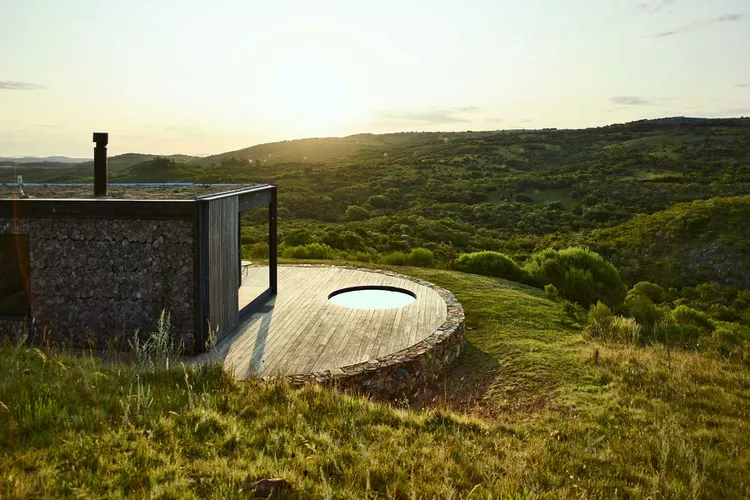
In the past, the interior of Uruguay was home to mainly cows and sheep. To build boxy, Brutalist-inspired dachas with panoramic vistas, affluent Argentines and Brazilians, as well as the occasional Uruguayan and American, have, nevertheless, recruited regional and global architectural companies in recent years. Michele and I drove by a dozen of these haciendas, many of which were still in use as working ranches. They were simply painted, remarkably unostentatious, built from craggy rocks and untreated wood.
The 400-acre, 580,000-gallon Bodega Garzón winery, a sleek, cutting-edge, $85 million business built by Alejandro Bulgheroni, rumored to be the richest man in Argentina, is by far the most eye-catching of the new constructions dominating the interior of Uruguay. The winery provides tours and has a restaurant run by Francis Mailman, a well-known chef from Argentina. It is unclear whether the Tannats, Pinot Grigio, Cabernet, and Albario wines produced by Bodega Garzón would enable Uruguay to enter the ranks of export giants like Argentina or Chile (exports increased to 6.5 million bottles in 2018 compared to Chile's 1.2 billion bottles). Even yet, the neighborhood is now referred to as "the wine-making region of Garzón" as a result of the development.
The rolling hills give place to a mountainous area that is not irrationally known as the Tuscany of Uruguay as one travels deeper into the Maldonado province. We had reserved a room at the Sacramento Landscape Hotel, a winery with luxurious "shelters" spread across a vast vineyard not far from Pueblo Edén.
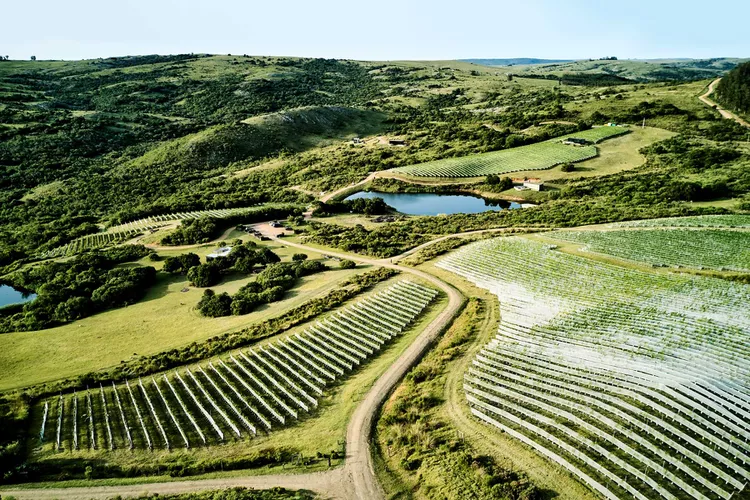
The owner of Sacramento, Edmond Borit, quit his position as a senior executive with a European multinational in 2014 to carry on his grandfather's winemaking tradition in France. In order to allow the land to return to its natural state, he purchased 250 acres with the seemingly eccentric intention of leaving 85 percent of the area uncultivated. He joked, "Everyone believed I was going through a midlife crisis. "I sold all I had in stock options."
Borat characterized a goal dedicated to enjoying the land while conserving local customs with an almost austere, artistic determination. He questioned the excessive effects of the larger vineyards nearby, which, ironically, constantly tout sustainability "Naturally, I'm interested in exploiting the terroir and producing excellent wine. But I also want to frame nature for more in-depth reflection by encouraging people to think deeply about the land."
The conventional Uruguayan paradigm of beach and ranch is left far behind by Borit's homes made of steel and reflective glass, which instead reveal the romance of its pastoral interior. I discovered the gushing stream with moss-covered boulders after hiking through the private valleys of Sacramento. It was tucked between a row of dwarf willows and coronals, spiky, stunted trees that provided shelter for swarms of fluttering white moths.
The Lares guide Perelli had made the observation that the pine forests and dense, fragrant groves of eucalyptus that I'd unconsciously associated with the nation since childhood were actually non-native, having been imported by Europeans to anchor the sand dunes, yield lumber for building, and provide shade for cattle. Uruguay was once covered in sparse, scrubby forests similar to those at Sacromonte that are currently regenerating. What struck me the most as I went along the creek, playing peek-a-boo with a fox racing in front of me, was the silence. A cow's lowing from the other side of the hill was the loudest sound I had heard all morning.
It was impossible to not but see the mini-valley in front of me like a painting that evening as I watched the sunset with my cousin while sipping a bottle of Carapé Reserva, an oaky blend of Tannat, Merlot, and Cabernet Sauvignon.
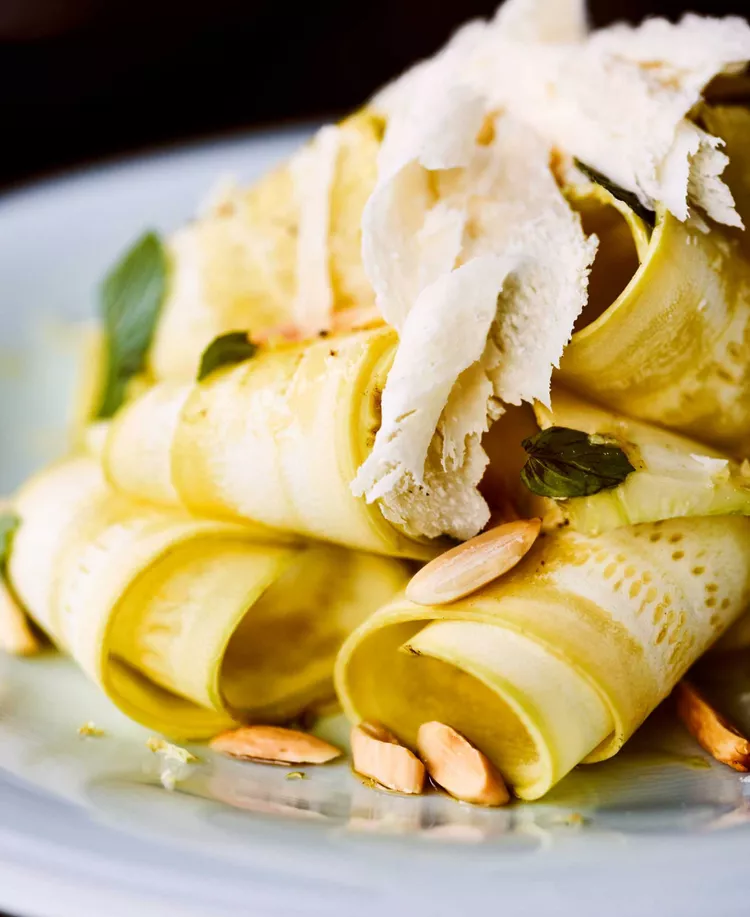
Around an hour's journey from Sacramento, I made a U-turn and returned to Pueblo Garzón. With less than 300 residents, the town appears an unlikely location for a sophisticated cultural experience. The location, which had been abandoned for over a century when Mailman "rediscovered" it, now has a hotel, two restaurants, and an artists' residency. Together with Villa Anna, his adjacent bed-and-breakfast, Mailman's hotel and restaurant Garzón combines the traditional Deco design ethos of Uruguay and Argentina with cosily rustic French accents.
I selected a sirloin milanesa, a traditional veal or beef-breasted dish. It was three or four times thicker than any I've had, yet incredibly supple, and coated with a mixture of panko, bread crumbs, brioche, and Parmesan. The grilled octopus was saline, smoky perfection (everything at Restaurant Garzón is cooked with wood fire), and it was served with diced potatoes that were so smooth and otherworldly they appeared to have been created by a machine. A new benchmark was set by the raw-zucchini salad with mint and finely shaved Parmesan.
Mailman had received accolades from Perelli for being somewhat visionary. "Nothing else exists beyond the holiday window because everything else shuts down in February. Here inside, Mailman's is open all year. Indeed, he's driven a considerably deeper stake, "She went on. He has increased the bar for everyone.
My final lunch was at Choto, a low-key new restaurant in the area headed by renowned Argentine TV and film comic Fabio Alberti. Alberti, kind and cheeky, came to greet me as I parked on a grassy slope outside of what appeared to be more of a farmhouse than a restaurant. He then apologised for my bad luck. He would be cooking because his wife had left to visit family in Argentina. He gave it a dismal tone.
He shrugged and said, "Well, that's the tour," pointing to an improvised chicken and cattle pen, a garden, a grove of fig and peach trees, and an inquisitive young lamb who would keep us company during the supper. Then he led me outside to a vine-covered arbour, went inside, and turned on the vinyl record of Johnny Cash's Hymns from 1959.
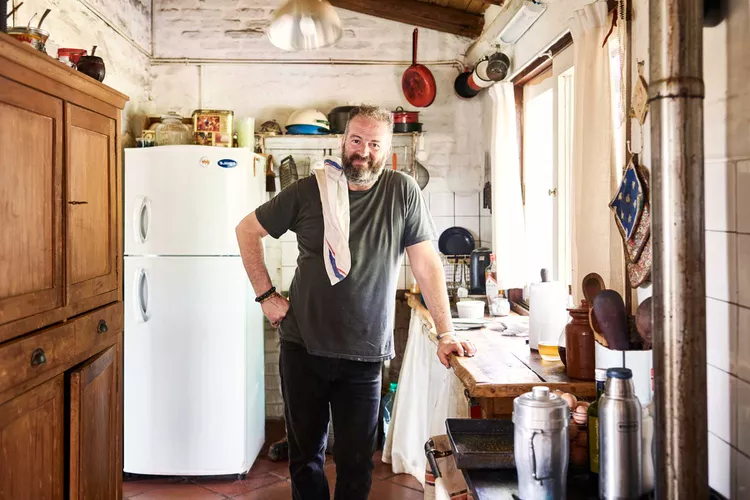
I discovered that while choto means intestine in Uruguay, the name conjures up much cruder images in Argentina as we cheerfully shouted over the kitchen window. Alberti appeared not to hear me when I questioned which interpretation he had in mind for his restaurant. A short while later, he came out of the kitchen carrying a big bone on a little plate.
"This is a cow arm, like osso buco," he declared. The marrow is known as carac." The marrow was a spoonful of food, served on rectangular slices of toast with sea salt chips the size of snowflakes. It was exceptional. Alberti explained that he'd visited Pueblo Edén sporadically for 15 years but only decided to move from Buenos Aires a year ago, in between plates of homemade headcheese with blueberries, some gooey Camembert he described as "half Camembert, half Muenster," with lettuce from the garden, and an exquisitely poached egg. His transfer to the restaurant industry sounded dubious even today. "I'm an actor, not a cook. I'd like not to be obligated by this. I'll open when folks want to come, okay. Great if people like it."
The last dish was duck, which was a novelty for me in Uruguay. On the inside, it was juicy and soft, while on the outside, it was greasy and crispy. It was served with three different batches of fries that Alberti had made. I suggested that he seemed to care a lot about cooking for a non-chef. He chuckled. I picked up everything from YouTube. There is no better way to describe the difference between Alberti's meticulously crafted goods and their rural, rustic location.
I had travelled down a three-fork dirt road in search of Choto, stopping along the way to manually open and close two cattle fences. Alberti keeps a busy Instagram account but doesn't bother with other forms of advertising. He charges $42 per couple, wine and dessert included, almost as an afterthought. I was moved by his artistry and told him that his casual attitude towards business reminded me of a hypothetical, purist DJ who gave free, unannounced performances on a far-off island reachable only by canoe. The comparison seems to make Alberti happy. He thought, "Uruguay doesn't have much. "Yet it makes wonderful use of what it has. I want to live in that manner. I want to work less and have less, but I want to make the most of what I do have. That, in my opinion, is the ideal life."
